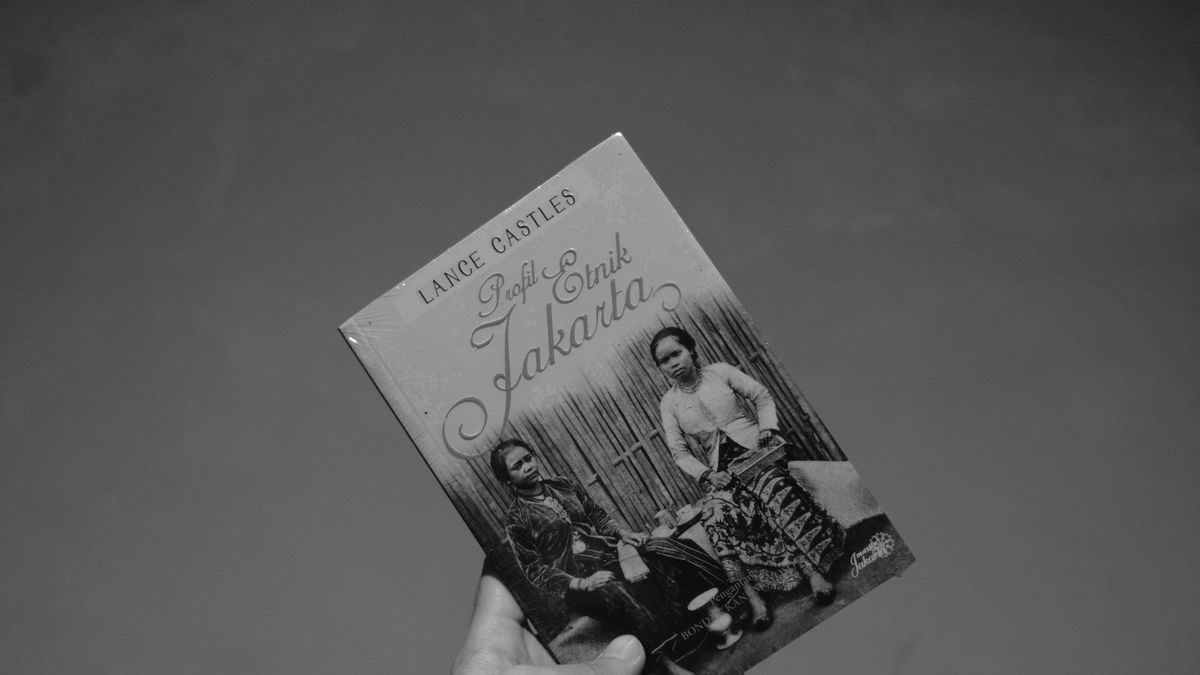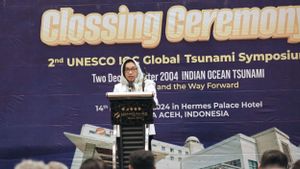JAKARTA - The rate of development of Betawi Malay as an ethnic group is quite interesting to observe. In 1923, Tabri Thamrin, MH Thamrin, the Betawi People Association (Jong Betawi), allegedly existed long before the Dutch colonized Indonesia.
It is even believed that the ethnic descent directly from the Betawi Malay ethnicity still exists in Warakas Village. Where the designer-founder of the Kingdom of Salakanegara lives in the Condet area and has been established since 130 AD.
Therefore, if there are differences of opinion, the Betawi ethnic group is a descendant of slaves brought by Dutch trading partners from all over the country. So, get ready and many of the Betawi residents will immediately get angry.
For example, when an Australian researcher, Lance Castles, raised this view through his writing entitled "The Ethnic Profile of Jakarta" which was published in the Indonesian journal published by Cornell University (1967).
At first, the writing was not really a problem. However, when many historical figures, anthropologists from the University of Indonesia, and their students quoted Castles's writings on every discussion of the Betawi ethnicity. It could be that the Betawi people will immediately react strongly.
One of the protesters was the Betawi figure, Ridwan Saidi. He did not just protest. Moreover, Ridwan Saidi immediately countered the accusation by writing a book entitled Babad Tanah Betawi (2002), as a rebuttal to Castles' writings.
Inevitably, protests then emerged from other Betawi people who said they did not agree. In fact, as historian JJ Rizal said, very few Betawi people have ever read the academic studies of the disputed Castles.
Therefore, JJ Rizal, who also owns the Masup Jakarta book publication, then gave permission to Castles to book his work. So that the wider audience, especially the Betawi people, can find out the extent of Castles' analysis. As a result, a book entitled The Jakarta Ethnic Profile (2007) was published. It was through this work that those who had been furious could find out what was the matter raised by Castles.
Jakarta Ethnic ProfileIn the book, the question of Betawi origins raised by Castles is only one part of his study. There, Castles suggests that the main elements that make up the Betawi people are slaves, with a method based on a number of demographic data from 1673-1945 in Batavia (Jakarta).
Then, Castle did not suspect that his research could upset the Betawi people. This is because, in conclusion, Castel actually glorifies the Betawi and Jakarta ethnicities. In fact, through the data presented by Lance, he did not forget to criticize the Betawi ethnic group. Therefore, we help to break it down.
First, the author is proud of Jakarta. Reading from the first sheet of Castles' writing, the reader will get the fact that Jakarta is so exalted by the writer. Castles stated his conclusion that of the thousands of islands in the country, the homeland of the Betawi people was chosen as the place for "God made the Indonesians."
"However, paradoxically Jakarta is also the only city that is most Indonesian. Zangwill in Israel is the most appropriate metaphor for Jakarta because Jakarta is a melting pot (melting pot), where the Sundanese, Javanese, Chinese, and Batak people merge into one, ”written on page 2.
Second, interesting demographic data. Castles does not only focus on discussing the origins of the Betawi people. Instead, he discussed a lot about the characteristics of the multi-ethnic residents of Jakarta from the past to 1960. This approach is often used by other historical books that talk about Jakarta.
Here, Castles discusses it at length, starting from the policy of the Jayakarta conqueror, VOC Governor General Jan Pieterszoon Coen, who encouraged large-scale migration of the Chinese, and the Banda people he had just conquered to settle in Batavia (Jakarta). In addition, Japanese mercenaries were also an important element of the Batavian population until 1636.
Not only that, the Dutch VOC trading partnership also brought in other free residents from various other regions. There are Moors (Muslims from South India), Malays, Balinese, Bugis and Ambonese. "However, the number of free people in Old Batavia was generally outnumbered by the slaves," appears on page 7.
Third, scientific work that is easy to understand. Even though Castles' writing looks stiff because it departs from scientific works that play with data exposure, this writing is still easy to understand. He himself displays tables containing the population census, then provides an explanation afterwards. Not surprisingly, this writing is a work that can be understood in one reading.
Fourth, Castles criticized the Betawi ethnicity. Not only playing with data exposure. At the end, Lance regretted the Betawi ethnicity which tends to be forgotten in the nation's historical process. In fact, various historical events including the establishment of Indonesia through the proclamation of independence on August 17, 1945 were staged in Jakarta.
Ironically, the Betawi people themselves are underrepresented among the elite, both locally and nationally. Also seeing the current reality of the Betawi ethnicity as if they are foreign to their own land because they have had diaspora everywhere.
"It should be noted, however, that Sundanese and Betawi people are underrepresented in the elite not only in relation to the population of Jakarta, but also with the population of Indonesia as a whole," Castles said on Page 81.
Detail
Book Title: Jakarta Ethnic Profile
Author: Lance Castles
First Published: 1967 (Indonesian Version: 2007)
Publisher: Masup Jakarta
Number of Pages: 108
The English, Chinese, Japanese, Arabic, and French versions are automatically generated by the AI. So there may still be inaccuracies in translating, please always see Indonesian as our main language. (system supported by DigitalSiber.id)










